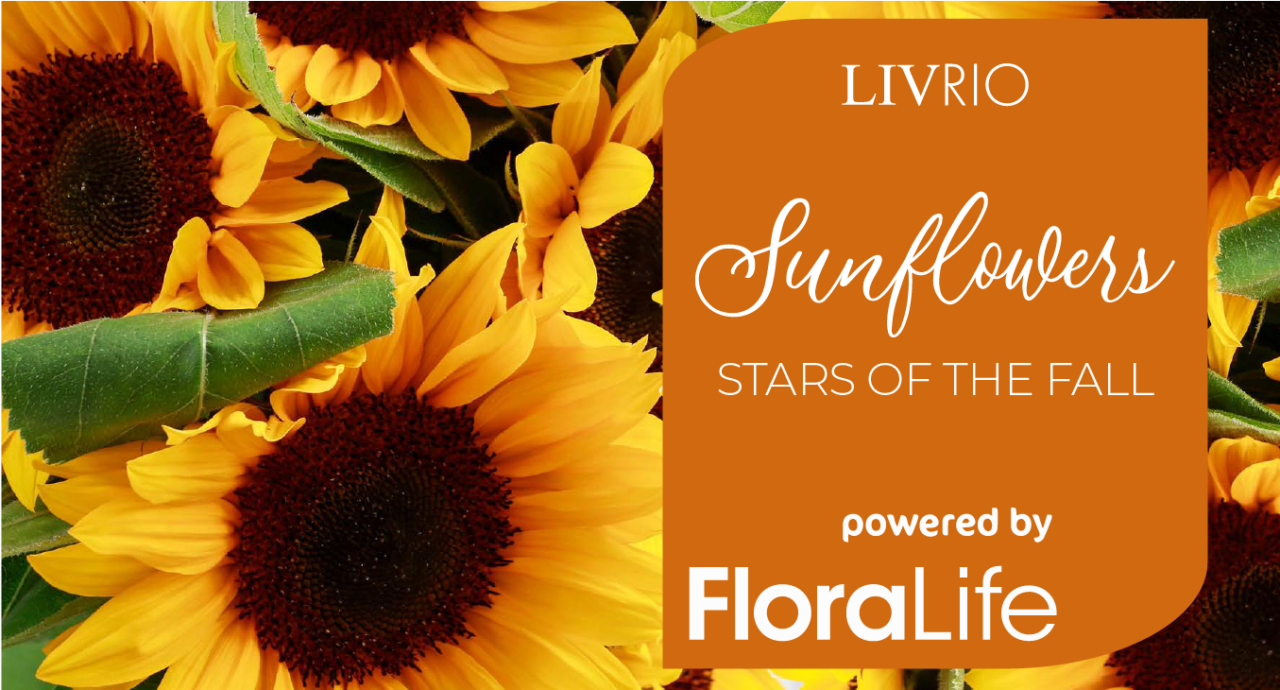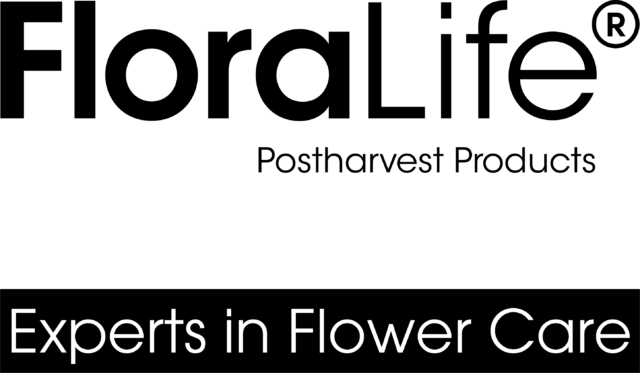Sunflowers: Stars of the Fall
LivRio Magazine September 2022, powered by FloraLife

Mainly native to the Americas, sunflowers belong to the same plant family as Chrysanthemums, and Gerberas. Their Latin name, Helianthus, comes from the Greek words for sun, Helios, and flower, Anthos. This is due to the Sunflower’s habit of facing towards the sun and tracking its path throughout the day. This movement only occurs in young plants, and as Sunflowers reach maturity, the stems become fixed, permanently facing eastward. This habit is called heliotropism and is the reason you will see fields of Sunflowers all facing the same direction.
Like all members of the Asteraceae family, Sunflowers are not one flower, but a collection of many small flowers. The ‘petals’ of a Sunflower are actually individual flowers called Ray flowers, and the centers are made up of Disk flowers which produce the seeds. Collectively, the ray and disk flowers are called Heads.
Although often grown for their ornamental value, Sunflowers are also a valuable source of food. Their seeds can be eaten or be used to produce oil, and their leaves and stalks can be used for forage or silage.
Interestingly, the seeds in a Sunflower head are arranged in a pattern of interconnecting spirals, where the number of left spirals and the number of right spirals are successive Fibonacci numbers. This produces the most efficient packing of seeds within the flower head.
Lastly, there are many different types and varieties of Sunflowers ranging ‘Mammoth Russian’, a tall, large headed plant, to red varieties such as ‘Red Sun’ and the shorter, compact ‘Teddy Bear’ which were famously painted by Vincent van Gogh in 1888.
Care & Handling Tips
Purchasing
- Choose stems with heads showing color, and ½ to ¾ open.
Shipping & Storage
- Shipping and storage temperatures should be 34 – 38° F / 1 – 3° C.
- Stems should be shipped and packaged to minimize damage in transit.
Hydration & Storage at Store Level
- Start processing with a clean bucket, sanitized with FloraLife® D.C.D.® Cleaner.
- If received dry packed, conditioning of stem ends is recommended to prevent blockage and promote uptake. Cut approximately 1” / 3cm or more off stems. Use clean, sanitized clippers or knife, and treat with FloraLife® Quick Dip.
- Place flowers in a holding treatment such as FloraLife® Express 200. Do not put flowers directly in metal/galvanized buckets. Use clean, high-quality water that has not been treated with a water softener as the salt levels can be damaging to flowers.
- Store in a cooler at 34 – 38° F (1-3° C) with a relative humidity of 75-85%
- Allow minimum 2 hours to hydrate placing buckets in an area with good airflow.
- Always remember FIFO (first in/first out) when rotating flowers.
Vase Care
- Remove any leaves that might be below the vase solution.
- Cut approximately 1” / 3cm or more off stems. Use clean, sanitized clippers or knife. If received dry, treat with FloraLife® Quick Dip.
- Immediately place flowers in vase solutions containing FloraLife Crystal Clear® 300 or FloraLife® Express 300.
- Keep away from direct sunlight and ripening fruits.
Common Defects
- Botrytis can develop in flower head. Always maintain the correct temperature and humidity levels during storage.
- Poor opening due too tight cut stage.
- Foliage yellowing or browning.
Special Considerations:
- If flower head is too closed, keep sunflowers at room temperature in a solution of FloraLife® Express 200 and allow to open naturally.
- Sunflowers are notoriously known to have dirty stems. Good hygiene is a must when handling and storing stems.
For more information, click here:
https://floralife.com/article/sunflower-troubleshooting/
https://floralife.com/flowers/sunflower/
https://floralife.com/flower-library-for-retailers/
*Product availability depends upon geographical region. Check https://floralife.com/products/#product_grid for more information.
